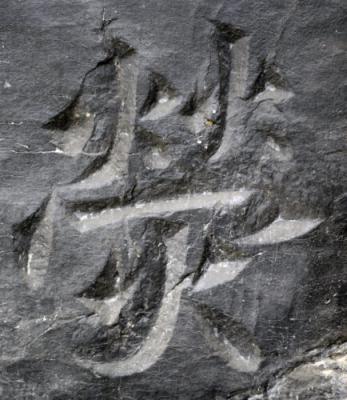Project « Altergraphy »
ALTERGRAPHY - When Writing Becomes Calligraphy: An Alternative History of Chinese Script Based on Medieval Inscribed Landscapes and their Modern Reception
This project aims to reintegrate into the history of calligraphy the monumental works of the Taoist poet Zheng Daozhao (455-516) and the Buddhist monk Seng’An Daoyi (active 562-580), long neglected by classical tradition. Their inscriptions engraved in the mountains, known mainly through prints detached from their context, nevertheless reveal strategic choices linked to material constraints, local customs and religious traditions. By studying both their in situ production and their reception through printmaking – which favored their circulation and integration into new corpora – the project questions the redefinition of the notion of calligraphy. The field survey and collaborative analysis of data (approximately 1,500 photos and 1,000 prints), made freely accessible and interoperable with international databases, will allow us to approach the management of digital corpora of inscriptions and prints from a diachronic and global perspective.
Research project conducted by Lia Wei (Inalco).
Research projects:
Researcher
Discover other research projects
Scientific team
The research carried out at Mariemont is organised around 8 thematic areas which reflect the specific features of the scientific work carried out in the museum sector.
There are around thirty collaborative research projects in which members of the Mariemont scientific team are involved.
The results of this research are made available to the scientific community and are the subject of ongoing accessibility work to ensure that they are passed on to the public.




